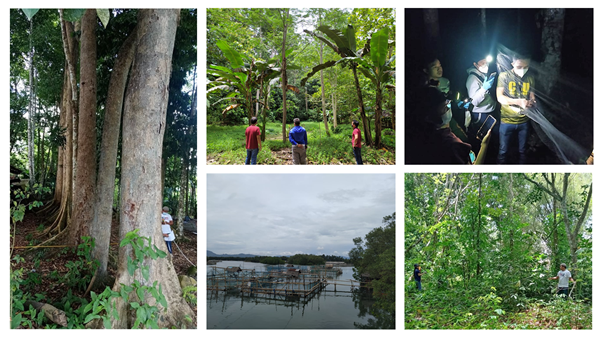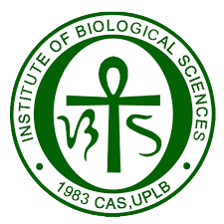Caraga State University on-site team’s vegetation and faunal assessment workshop at the Satoyama landscape in Brgy. Tungao and Satoumi Seascape in Brgy. Masao, Butuan (Photo: EIDR-Smart Cities Program)
The program Blending of Multimedia Approach and Satoyama-Satoumi Principles for Building Climate Smart Communities is a project approved under the Emerging Interdisciplinary Research Program (EIDR) of the UP System. This program sets out to collect and analyze information on the biological, environmental, and cultural components of the targeted upland and coastal communities using satoyama and satoumi principles. The information will be used to surface out connections and relationships essential to the promotion of satoyama-satoumi conservation initiatives.
The vision of the program is for the development of climate-smart communities through capacity development in the communities and the local government units. Capacity development will be done through training/workshops using the developed multimedia materials and online open courses. The contents of these materials and courses will be generated from the assessment of the biophysical environment (Project 1), disaster preparedness of identified communities vulnerable to climate change (Project 2), and the assessment of resilience indicators and community well-being (Project 3) will be used to assess the extent at which the community has adapted to climate change. The research outputs will be used in the creation of multimedia materials such as photographs, maps, educational videos, interactive learning sites/websites, and games in open online courses (Project 4).
Project 1 aims to know the current vegetation and faunal composition in the sites to determine available resources and ecosystem services for the communities as well as to identify key species for conservation and management. Results will imply how people are interacting with the ecosystem whether sustainably or not, hence we can propose appropriate recommendations. These will be done through standard vegetation analysis methods; documentation of knowledge and practices of plant resource management; identification and assessment of the status of ecologically and culturally important animal species; and identification of species and habitats in need of conservation actions as a result of climate change.
Dr. Ricardo T. Bagarinao (UPOU) – Program Leader
Dr. Inocencio E. Buot, Jr. -Project Leader (Project 1: Assessment of biophysical environment in selected communities vulnerable to climate change)
–


